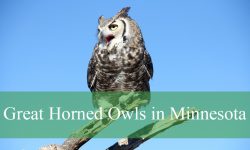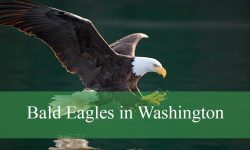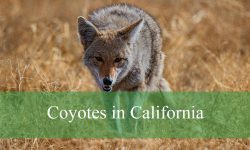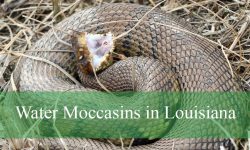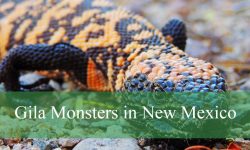Massachusetts is a state of contrasts—historic cities, quiet forests, rocky coastlines, and rolling farmlands. But whether you’re walking through Boston Common or hiking in the Berkshires, one bird seems to be watching from above, intelligent eyes glinting with mischief—the crow.
Crows are among the most misunderstood birds in the world. In Massachusetts, they are both admired and disliked—admired for their astonishing intelligence and adaptability, yet disliked for their loud calls and habit of scavenging. However, there’s far more to these black-feathered geniuses than meets the eye.
In this article, we’ll uncover shocking secrets about crows in Massachusetts—from their problem-solving abilities and complex social lives to their surprising emotional depth and memory power. You’ll discover how these birds have adapted to urban life, how they communicate, and why scientists call them “feathered primates.”
Meet the Crow: Massachusetts’ Clever Resident
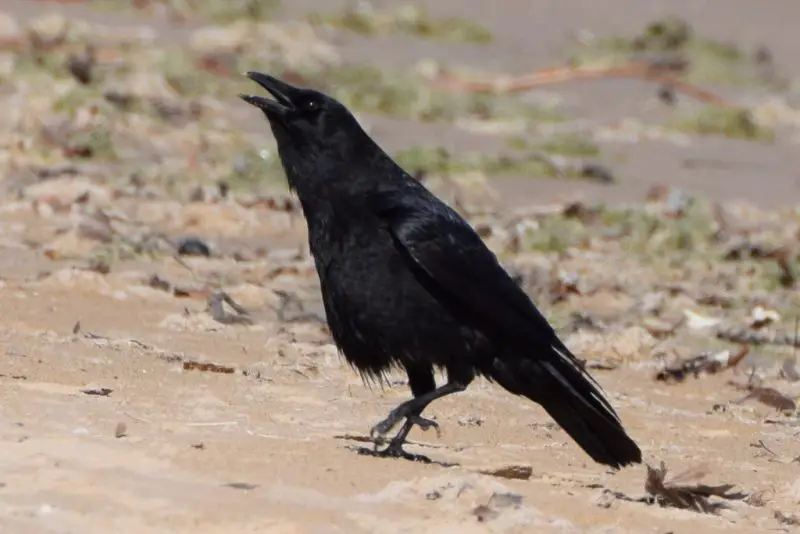
Species Found in Massachusetts
Massachusetts is home to two main crow species: the American crow (Corvus brachyrhynchos) and the fish crow (Corvus ossifragus). While both are black and similar in size, they differ slightly in voice and behavior.
- American crow: The most common, found in forests, fields, and cities across the state.
- Fish crow: Slightly smaller with a distinct nasal “cah” call, common near coastal and river areas.
During winter, both species may gather in massive communal roosts—sometimes numbering thousands of individuals—creating one of nature’s most spectacular avian gatherings.
Appearance and Characteristics
Crows are medium to large birds with glossy black feathers that shimmer blue or purple in sunlight. They weigh about one pound and have a wingspan of roughly three feet. Their strong beaks, sharp eyes, and agile flight make them efficient scavengers and opportunistic hunters.
Despite their plain color, crows are strikingly beautiful when observed closely. Their feathers reflect light like polished obsidian, and their eyes convey a curious intelligence rarely seen in birds.
The Astonishing Intelligence of Crows
Smarter Than You Think
Crows are often compared to chimpanzees and dolphins in intelligence. They can solve puzzles, recognize faces, use tools, and even plan for the future—traits once thought to be uniquely human.
In laboratory experiments, crows have bent wires into hooks to retrieve food, dropped nuts onto roads for cars to crack open, and used traffic lights to time their retrievals safely. In Massachusetts cities like Cambridge and Worcester, similar behaviors have been documented as crows adapt to urban life.
Facial Recognition
Perhaps the most shocking fact about crows is their ability to recognize human faces—and remember them for years. If a person harms or threatens a crow, that individual’s face is catalogued in the crow’s memory. Even more astonishing, they communicate this information to other crows, who learn to avoid or harass that person in return.
Problem Solvers and Tool Users
Crows don’t just react—they reason. In one famous study, a crow named “Betty” bent a wire into a hook to retrieve a treat from a tube, proving that crows can invent tools spontaneously. Wild crows in Massachusetts have been observed dropping hard-shelled clams onto parking lots or streets, letting cars break them open—a learned behavior passed from one generation to the next.
Crows in Massachusetts Ecosystems
Habitat and Range
Crows thrive throughout Massachusetts, from Boston’s city parks to the Quabbin Reservoir and Cape Cod marshlands. Their adaptability allows them to live almost anywhere that provides food and trees for roosting.
In rural areas, they feed on insects, grains, and small animals, helping control pests. In cities, they scavenge garbage and roadkill, cleaning up the environment in their own unique way.
Diet and Feeding Habits
Crows are omnivores with an extremely diverse diet, including:
- Insects, worms, and small mammals.
- Eggs and nestlings of other birds.
- Fruits, seeds, and grains.
- Carrion and human leftovers.
Their diet changes with the seasons—berries in summer, grain in autumn, and scavenged food in winter. Crows’ resourcefulness makes them a vital part of Massachusetts’ ecosystem.
Ecological Role
Crows play an essential role as both predators and scavengers. By cleaning up carrion and waste, they prevent disease spread. Their predation on insects and rodents helps control agricultural pests, benefiting farmers across the state.
Shocking Secrets About Crow Behavior
They Hold Funerals
Yes, you read that correctly. When a crow dies, nearby crows gather around the body, cawing loudly and often staying for several minutes. Scientists believe these “crow funerals” are not displays of mourning but learning opportunities. The group observes and remembers the location, possibly associating it with danger.
They Communicate With Complex Calls
Crows have over 250 distinct vocalizations, and their calls vary by region—much like human dialects. They use different tones for warnings, greetings, and even play. Researchers have found that crows in Massachusetts coastal areas have calls slightly different from those in inland regions, showing localized communication patterns.
They Play—And Laugh
Play is a sign of intelligence, and crows are playful creatures. They’ve been observed sliding down snowy rooftops, teasing other animals, and even playing fetch with humans. In one remarkable case near Salem, crows repeatedly dropped pebbles into a pond, seemingly to watch the ripples—a sign of curiosity and enjoyment.
Family and Social Life
Tight-Knit Families
Crows are social birds that live in family groups. Young crows often stay with their parents for several years, helping to raise new chicks. This cooperative breeding behavior strengthens family bonds and ensures survival during harsh winters.
In Massachusetts, where winters can be long and food scarce, this teamwork gives family groups a better chance of finding food and defending territory.
Hierarchy and Leadership
Within flocks, crows have a social hierarchy. Older, more experienced birds often lead younger ones to feeding sites or roosts. They share information, warn others of danger, and coordinate movements using a mix of vocal calls and body signals.
Massive Winter Roosts
Every winter, crows gather in enormous communal roosts across Massachusetts. Thousands of them perch together in trees, creating a cacophony of calls at dusk and dawn.
Major roosting sites include:
- The Merrimack Valley, near Lawrence and Lowell.
- Worcester city outskirts.
- Springfield and Holyoke River valleys.
These gatherings provide warmth, protection from predators, and opportunities for social interaction.
Crows and Humans in Massachusetts
Urban Adaptation
Crows have learned to navigate Massachusetts cities with ease. They use rooftops, telephone poles, and parks as perches. They raid trash cans, visit outdoor dining areas, and even recognize daily human routines.
Their intelligence helps them avoid danger—they learn traffic patterns, recognize feeding schedules, and even time their scavenging when fewer people are around. In Cambridge and Boston, researchers from Harvard University have studied urban crow populations to understand how they interpret human behavior and adapt to complex environments.
Conflict With People
Despite their intelligence, crows sometimes clash with humans. Their loud calls and messy feeding habits can annoy residents. Farmers may see them as pests when they raid cornfields. However, these conflicts are often exaggerated—crows do far more good than harm by eating crop-damaging insects and cleaning up waste.
Cultural Symbolism
Crows appear in folklore, mythology, and literature worldwide. In Native American traditions, they are messengers and symbols of transformation. In modern culture, they are often associated with mystery, death, and intelligence. Massachusetts, with its rich colonial history and ghostly legends, provides the perfect backdrop for the crow’s eerie reputation.
Fascinating Scientific Discoveries
They Understand Water Displacement
Experiments show that crows understand the principle of water displacement, similar to the legend of Archimedes. When presented with a tube of water containing floating food, they drop stones in to raise the water level—an extraordinary example of reasoning and cause-and-effect understanding.
They Use Tools Cooperatively
Wild crows have been seen breaking twigs and using them to dig insects out of tree bark. Some even use one tool to obtain another—known as meta-tool use, a skill previously only seen in humans and great apes.
They Remember Kindness
Just as crows remember threats, they also remember kindness. People who feed crows regularly often receive “gifts” in return—small trinkets like shiny beads, bottle caps, or pebbles. In parts of Massachusetts, especially suburban neighborhoods, this behavior has been reported frequently by residents who feed them consistently.
The Crow’s Adaptation to Massachusetts Winters
Cold Weather Strategies
Crows are resilient, surviving Massachusetts winters with strategies that include:
- Fluffing feathers to trap warm air.
- Huddling together in large roosts for warmth.
- Caching food—hiding extra food to retrieve later.
Their intelligence helps them locate and store food efficiently, remembering precise hiding spots for weeks.
Migration and Movement
While crows in Massachusetts are largely year-round residents, some populations move slightly southward during extreme cold. However, most adapt by relying on human-generated food sources in towns and cities.
Conservation and Coexistence
Population Status
Crows are not endangered—in fact, they’re thriving. Their intelligence and adaptability have helped them flourish despite urbanization. However, they are vulnerable to West Nile Virus, which has reduced local populations in past years.
Legal Protection
Crows are protected under the Migratory Bird Treaty Act, but they can be managed under regulated hunting seasons in Massachusetts when populations grow too dense.
Coexisting Peacefully
You can coexist with crows by:
- Securing garbage and compost bins.
- Avoiding feeding them processed foods.
- Appreciating their role as natural recyclers and pest controllers.
- Observing them from a distance without disrupting nesting sites.
Shocking but True: Crow Intelligence Compared to Humans
Crows display levels of problem-solving comparable to a seven-year-old child. They exhibit emotional intelligence, using cooperation, empathy, and even deception to achieve their goals.
They can count, plan, and understand analogies, showing remarkable brain complexity. Scientists from the University of Washington and Harvard University have found that crow brains are proportionally as dense with neurons as primates—an astonishing evolutionary achievement for a bird.
This means that the crows cawing outside your Massachusetts window might be watching and learning more about you than you realize.
FAQs About Crows in Massachusetts
Do crows attack humans?
Very rarely. They may swoop during nesting season to protect chicks but seldom cause harm.
Why are there so many crows in winter?
Because they gather in communal roosts for warmth and protection. Thousands may group together at night.
Can crows talk like parrots?
Some can mimic human speech and sounds, though not as clearly as parrots.
What do crows eat in Massachusetts?
They eat insects, small mammals, berries, seeds, and human food waste.
How long do crows live?
In the wild, they live about 7–8 years, but in captivity, some have reached 20 years.
Are crows good or bad omens?
Culturally, they symbolize both death and intelligence—depending on the tradition. In reality, they are just fascinating survivors.
Conclusion
Crows in Massachusetts are more than noisy black birds—they’re intelligent, emotional, and deeply social creatures. They remember faces, solve puzzles, and even use tools—behaviors once thought exclusive to humans. Their adaptability has allowed them to thrive in cities, farms, and forests across the state, turning them into one of the most successful wild species in New England.
So, the next time a crow lands near you or caws from a lamppost, don’t dismiss it as ordinary. You may be in the presence of a genius—one that knows more about your world than you might imagine. These birds are living proof that intelligence, adaptability, and curiosity aren’t just human traits—they’re universal, shared across species that have learned to master both nature and civilization.

